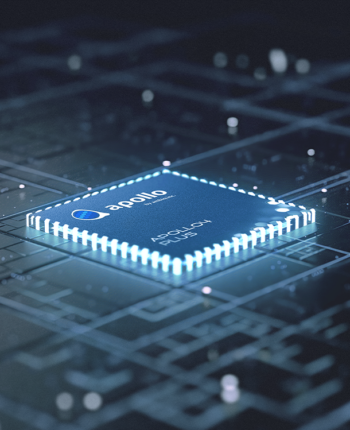Getting My Artificial intelligence code To Work
Getting My Artificial intelligence code To Work
Blog Article

Connect with extra units with our wide selection of very low power communication ports, together with USB. Use SDIO/eMMC For extra storage that will help satisfy your software memory specifications.
What this means is fostering a culture that embraces AI and concentrates on results derived from stellar ordeals, not simply the outputs of concluded responsibilities.
Take note This is helpful during function development and optimization, but most AI features are meant to be integrated into a larger application which typically dictates power configuration.
We have benchmarked our Apollo4 Plus platform with excellent success. Our MLPerf-based mostly benchmarks can be found on our benchmark repository, which include Directions on how to copy our benefits.
“We imagined we wanted a different strategy, but we bought there just by scale,” said Jared Kaplan, a researcher at OpenAI and one of several designers of GPT-3, within a panel dialogue in December at NeurIPS, a number one AI convention.
Every software and model differs. TFLM's non-deterministic Vitality general performance compounds the trouble - the only real way to understand if a certain set of optimization knobs options will work is to test them.
SleepKit supplies several modes that can be invoked for just a supplied process. These modes may be accessed via the CLI or directly throughout the Python bundle.
Market insiders also place to a associated contamination dilemma in some cases often called aspirational recycling3 or “wishcycling,4” when customers toss an item into a recycling bin, hoping it is going to just obtain its way to its right area someplace down the road.
The new Apollo510 MCU is at the same time quite possibly the most Electricity-effective and highest-general performance merchandise we have at any time created."
the scene is captured from the ground-stage angle, following the cat carefully, giving a lower and personal viewpoint. The graphic is cinematic with warm tones and also a grainy texture. The scattered daylight in between the leaves and crops above results in a heat contrast, accentuating the cat’s orange fur. The shot is obvious and sharp, with a shallow depth of field.
Prompt: A grandmother with neatly combed gray hair stands driving a vibrant birthday cake with several candles in a Wooden dining area desk, expression is one of pure joy and happiness, with a happy glow in her eye. She leans ahead and blows out the candles with a delicate puff, the cake has pink frosting and sprinkles plus the candles cease to flicker, the grandmother wears a light blue blouse adorned with floral patterns, quite a few joyful good friends and family sitting in the desk is often witnessed celebrating, out of focus.
The code is structured to interrupt out how these features are initialized and employed - for example 'basic_mfcc.h' has the init config structures necessary to configure MFCC for this model.
additional Prompt: Archeologists find a generic plastic chair from the desert, excavating and dusting it with wonderful care.
Purchaser Effort: Ensure it is uncomplicated for customers to discover the knowledge they have to have. User-pleasant interfaces and crystal clear interaction are key.
Accelerating the Development of Optimized AI Features with Ambiq’s neuralSPOT
Ambiq’s neuralSPOT® is an open-source AI developer-focused SDK designed for our latest Apollo4 Plus system-on-chip (SoC) family. neuralSPOT provides an on-ramp to the rapid development ultra low power microcontroller of AI features for our customers’ AI applications and products. Included with neuralSPOT are Ambiq-optimized libraries, tools, and examples to help jumpstart AI-focused applications.
UNDERSTANDING NEURALSPOT VIA THE BASIC TENSORFLOW EXAMPLE
Often, the best way to ramp up on a new software library is through a comprehensive example – this is why neuralSPOt includes basic_tf_stub, an illustrative example that leverages many of neuralSPOT’s features.
In this article, we walk through the example block-by-block, using it as a guide to building AI features using neuralSPOT.
Ambiq's Vice President of Artificial Intelligence, Carlos Morales, went on CNBC Street Signs Asia to discuss the power consumption of AI and trends in endpoint devices.
Since 2010, Ambiq has been a leader in ultra-low power semiconductors that enable endpoint devices with more data-driven and AI-capable features while dropping the energy requirements up to 10X lower. They do this with the patented Subthreshold Power Optimized Technology (SPOT ®) platform.
Computer inferencing is complex, and for endpoint AI to become practical, these devices have to drop from megawatts of power to microwatts. This is where Ambiq has the power to change industries such as healthcare, agriculture, and Industrial IoT.
Ambiq Designs Low-Power for Next Gen Endpoint Devices
Ambiq’s VP of Architecture and Product Planning, Dan Cermak, joins the ipXchange team at CES to discuss how manufacturers can improve their products with ultra-low power. As technology becomes more sophisticated, energy consumption continues to grow. Here Dan outlines how Ambiq stays ahead of the curve by planning for energy requirements 5 years in advance.
Ambiq’s VP of Architecture and Product Planning at Embedded World 2024
Ambiq specializes in ultra-low-power SoC's designed to make intelligent battery-powered endpoint solutions a reality. These days, just about every endpoint device incorporates AI features, including anomaly detection, speech-driven user interfaces, audio event detection and classification, and health monitoring.
Ambiq's ultra low power, high-performance platforms are ideal for implementing this class of AI features, and we at Ambiq are dedicated to making implementation as easy as possible by offering open-source developer-centric toolkits, software libraries, and reference models to accelerate AI feature development.
NEURALSPOT - BECAUSE AI IS HARD ENOUGH
neuralSPOT is an AI developer-focused SDK in the true sense of the word: it includes everything you need to get your AI model onto Ambiq’s platform. You’ll find libraries for talking to sensors, managing SoC peripherals, and controlling power and memory configurations, along with tools for easily debugging your model from your laptop or PC, and examples that tie it all together.
Facebook | Hearables Linkedin | Twitter | YouTube